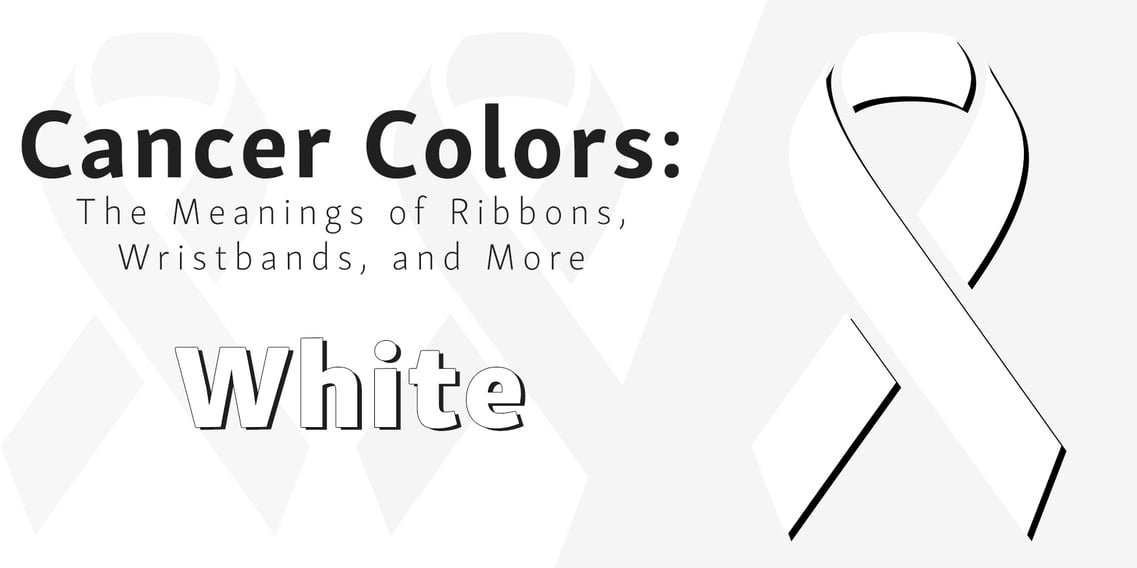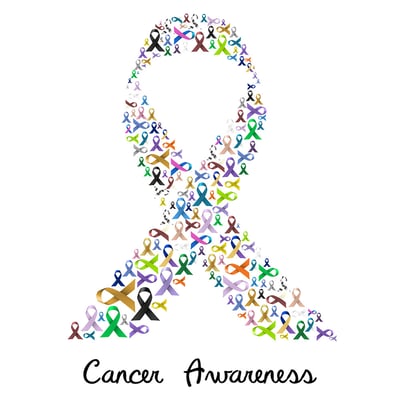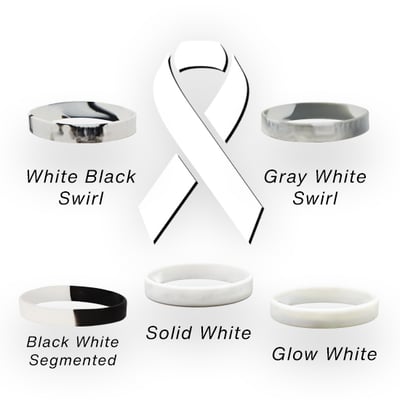
Did you know that the lung cancer ribbon is a powerful symbol of hope, strength, and unity in the fight against one of the deadliest forms of cancer? In this blog post, we’ll explore the meaning behind the lung cancer ribbon, its significance in raising awareness, and how it helps break down the stigma surrounding this disease. Dive in to learn important facts and figures about lung cancer, the history behind the ribbon, and how you can show your support during Lung Cancer Awareness Month.
Lung Cancer: Facts and Figures

According to the American Cancer Society, lung cancer is the second most common cancer and is responsible for more deaths than prostate and breast cancer combined.
Did You Know?
In the United States alone, 1 in 5 cancer deaths are due to lung cancer, and the five-year survival rate is a mere 22%, making it the leading cause of cancer related deaths. [1]
These sobering statistics emphasize the importance of understanding the different types of lung cancers and their risk factors, as well as the need for early detection and treatment.
Given that smoking is the main cause of lung cancer, raising disease awareness and educating individuals about regular screening and early treatment is of utmost importance. Offering accurate information and championing early detection can lead to enhanced survival rates and lessen lung cancer’s devastating impact on individuals and their families.
Types of Lung Cancer
There are various types of lung cancer, each with distinct characteristics and treatment options.
The two main types are non-small cell lung cancer (NSCLC) and small cell lung cancer (SCLC), with subtypes of NSCLC including adenocarcinoma, squamous cell carcinoma, and large cell carcinoma.
Grasping these differences aids in guiding treatment decisions and enhancing outcomes for those diagnosed with lung cancer.
Risk Factors and Causes
While smoking is the primary cause of lung cancer, non-smokers can also develop the disease due to exposure to radon, asbestos, and other environmental factors. Additionally, air pollution, radiation, and certain genetic factors can contribute to the risk of developing lung cancer.
Awareness of these risk factors and proactive preventive measures can assist individuals in lowering their chances of developing lung cancer, thus improving overall health outcomes.
Clearing The Air
Contrary to common belief, not all lung cancer cases are linked to smoking. Around 10-20% of lung cancer diagnoses every year are in people who have never smoked. [2]
Early Detection of Lung Cancer
Early detection and treatment of lung cancer are crucial for improving survival rates. Identifying the disease in the early stages offers cancer patients a wider range of treatment options and a better chance at survival. Screening methods such as CT scans and bronchoscopy have proven to be effective in detecting lung cancer at an early stage, making early detection essential in improving outcomes for individuals with lung cancer.
Screening and Diagnosis
Regular lung cancer screenings, such as CT scans, are recommended for high-risk individuals, including current and former smokers. These screenings can lead to early lung cancer diagnoses, increasing the chances of successful treatment.
To ensure the best possible outcomes, it is important to understand the screening and diagnosis process for lung cancer, as well as the available treatment options. Proactive engagement in healthcare allows you to make informed decisions about your care and collaborate with your healthcare team to develop a personalized treatment plan that caters to your unique needs and circumstances.
A Breath Of Relief
Despite being a leading cause of cancer related deaths, there's good news that the rates of lung cancer are actually decreasing. This decline is largely attributed to the reduction in smoking rates and improvements in early detection and treatment over the years. [3]
The Significance of the Lung Cancer Ribbon
Lung cancer ribbons are a beacon of hope and unity, uniting those affected by the disease and their loved ones. This symbol plays a key role in raising awareness about lung cancer, debunking the misconception that it’s solely a smoker’s disease. In fact, anyone can be affected by lung cancer, just like other forms of cancer such as pancreatic cancer. Participation in awareness events and donning the ribbon enables us to express our support for individuals courageously battling lung cancer, thus contributing to the relentless fight against this devastating illness.
Wearing awareness ribbons is not only a sign of solidarity, but also helps fund vital lung cancer research and reduce lung cancer deaths. Much like the pink ribbon’s role in the National Breast Cancer Foundation’s fundraising and awareness efforts, the lung cancer ribbon remains pivotal in rallying support for lung cancer research, education, and advocacy initiatives.
The Color of the Lung Cancer Ribbon
Typically white, pearl, or clear, the color of the ribbon for lung cancers embodies purity and hope. This choice of color sends a powerful message of optimism and resilience for those affected by any lung cancers.
Some organizations may choose different colors to represent their unique missions and goals, but the white ribbon remains a universal symbol of hope and support in the fight against this formidable disease.

Origins of the Lung Cancer Ribbon
The White Ribbon Project was founded by Heidi and Pierre Onda to raise awareness for lung cancer after Heidi’s diagnosis and treatment for stage 3 lung cancer. Their courageous efforts have since transformed the ribbon into a symbol for Lung Cancer Awareness Month.
This yearly event provides a platform for:
-
Uniting those affected by lung cancer
-
Raising disease awareness
-
Backing research and advocacy initiatives with goals of reducing cancer-related mortality and enhancing the lives of those living with lung cancer.
Common Questions
What is the ribbon for smoking cancer?
Show your support for those impacted by lung cancer (aka smoking cancer) with the pearl or white ribbon.
What is the emblem for lung cancer?
The pearl or white ribbon is the emblem for lung cancer awareness, symbolizing hope and strength for those fighting the disease and supporting loved ones.
Why is the white ribbon used for lung cancer?
White symbolizes hope, purity, innocence, and represents the color of healthy lungs.
When is Lung Cancer Awareness Month?

Lung Cancer Awareness Month takes place in November, providing a focused opportunity for individuals and organizations to bring more attention to the disease, share stories, and support research and charities dedicated to the fight against lung cancer. Throughout the month, various events and initiatives take place around the world, bringing together those affected by the disease and their loved ones in an inspiring display of hope, strength, and unity. Additionally, Lung Cancer Awareness Month also plays a significant role in fundraising for lung cancer research and cancer patients in general.
Each November, the Lung Association publishes a State of Lung Cancer report that highlights the dangers posed by this deadly disease.
Wearing the Ribbon
Wearing the lung cancer ribbon during November is a simple yet powerful way to show support and raise awareness for the disease. Proudly displaying the ribbon as a wristband, pin, or other accessory conveys your solidarity with those affected by lung cancer and aids in spreading the message of hope and unity.
Additionally, sharing photos of the ribbon on social media platforms during lung cancer awareness month can further amplify the message and increase visibility.
Sharing Stories and Information
Throughout lung cancer awareness month, sharing personal stories of living with lung cancer and providing educational resources can help others understand the disease and its impact on individuals and families. Opening up about the journey’s challenges, triumphs, and lessons learned can offer comfort and support to others undergoing similar experiences.
Furthermore, sharing valuable information about lung cancer, its risk factors, and the importance of early detection can empower others to take charge of their health and make informed decisions about their care.
Supporting Research and Charities

Supporting lung cancer research and charities, such as the Lung Cancer Foundation of America, can help fund advancements in early detection and treatment options. Donating money, volunteering your time, or spreading disease awareness can significantly impact the fight against lung cancer and contribute to the ongoing effort to enhance survival rates and the quality of life for those affected by the disease.
Cancer Ribbon Colors: The Spectrum of Support Beyond Lung Cancer
We delved into the significance of the white ribbon in raising awareness about lung cancer, its prevalence, and some facts surrounding this particular type of cancer. It's imperative to note that while lung cancer has its unique challenges and facets, it's part of a larger family of cancers, each with its own set of characteristics, struggles, and awareness campaigns.
Just as the white ribbon symbolizes lung cancer awareness, other colors represent different types of cancer including rare cancers. For instance, the pink ribbon is synonymous with breast cancer awareness, dark blue with colon cancer, the yellow ribbon for bone cancer, burgundy for multiple myeloma, and so on. These varying colors not only help in creating distinct identities for each cancer type but also foster a sense of community and support among those affected, their families, and the broader public.
Extending the Cause: From Lung to Breast Cancer Awareness
From Pink To White
Since 1987, lung cancer has taken a lead over breast cancer in causing more deaths among women in the United States. This shift marked a critical point in understanding the gender-related impact of different cancer types and highlighted the escalating threat posed by lung cancer in the female population over time. [4]
However, despite these distinctions, all cancers, including lung cancer, share a common goal: to garner enough attention, research funding, and support to find effective treatments and, ultimately, cures. It's a collective endeavor that necessitates a unified approach, regardless of the type of cancer. This broader perspective on cancer awareness underscores the importance of understanding and supporting the different awareness campaigns, even as we delve deeper into the specifics of lung cancer in this blog.
In addition to the lung cancer ribbon, there are numerous other cancer ribbon colors that represent various types of cancer, such as the purple ribbon for pancreatic cancer, or light blue for prostate cancer. Wearing and displaying these colorful ribbons raises awareness for all cancer forms and promotes a unified effort against this devastating disease.
Cancer Ribbons For The Most Common Types
Some common cancer ribbon colors include pink for breast cancer, the black ribbon for skin cancer, and the lavender ribbon or light purple ribbon for all other cancers. Each color represents different cancers and the associated awareness efforts, symbolizing hope, strength, and unity for those affected by the disease.
Understanding the symbolism behind these colors enables us to raise awareness for various cancer forms and express our support for those affected by the disease.
Combining Ribbons for Multiple Cancers
Combining ribbons of different colors can represent support for multiple cancers or recognize cancer as a whole, promoting a unified effort to fight all forms of the disease. Creating and displaying multi-colored ribbons helps raise awareness for all cancer forms and shows our support for those affected by various diseases.
This powerful symbol of unity and strength can help bring together different cancer communities, including the American Cancer Society, and encourage a collective effort to combat cancer in all its forms.
How Can Wristbands Help?
White cancer wristbands are a significant emblem for individuals who wish to raise awareness about lung cancer and extend support to those impacted by this disease. When people wear a white wristband, especially one adorned with a No Smoking symbol or an artistic representation of lungs, they not only spark conversations about lung cancer but also create an environment of understanding and education. These designs serve as a vivid reminder of the importance of lung health and the preventive measures against lung cancer.

Community and Conversation: The Impact of Wearing White
It's a personal statement of solidarity and hope for those undergoing treatment or caring for someone with lung cancer. Inspirational words like “Breathe Hope,” “Lung Cancer Warrior,” or “Fight for Air” engraved on the wristbands provide encouragement and draw more attention to the cause. Moreover, incorporating important dates such as November for Lung Cancer Awareness Month on the wristbands can also help educate others and commemorate the ongoing fight against lung cancer.
People who choose to wear white silicone wristbands become active participants in a larger community of advocacy. They help in disseminating crucial information about the variety of symptoms associated with lung cancer, such as persistent cough, chest pain, shortness of breath, and fatigue. Each wristband worn is a step towards garnering more funding for research, enhancing available treatments, and providing robust support to those who need it most. By wearing a white wristband, individuals contribute to a collective endeavor aimed at spotlighting lung cancer awareness month, encouraging early detection, and making a tangible difference in the lives of those affected by this grave disease.
Summary
In conclusion, the lung cancer ribbon is a powerful symbol of hope, unity, and strength in the fight against lung cancer. By understanding its significance and the role it plays in raising awareness, promoting early detection, and supporting research and charities, we can all make a difference in the lives of those affected by this devastating disease. Let’s stand together in solidarity, wearing our ribbons with pride and spreading the message of hope and resilience in the face of lung cancer.

- Ribbon Color: White
- Pantone Code: 000C
- Hex Color Code: #FFFFFF
- Rapidwristbands Colors: Solid White, Glow White, White Black Swirl, Gray White Swirl, and Black White Segmented
[1] American Cancer Society https://www.cancer.org/cancer/types/lung-cancer/about/key-statistics.html
[2] Centers for Disease Control and Prevention. Lung Cancer Among People Who Never Smoked https://www.cdc.gov/cancer/lung/nonsmokers/index.htm
[3] Healthgrades.com https://www.healthgrades.com/right-care/lung-cancer/5-surprising-facts-about-lung-cancer
[4] National Library of Medicine - National Center for Biotechnology Information. Lung Cancer - Stat Pearls https://www.ncbi.nlm.nih.gov/books/NBK482357
.png)
.png)
.png)



.png)
.png)

.png)
.png)
.png)
.png)
.png)
.png)
.png)
.png)
.png)
.png)
.png)
